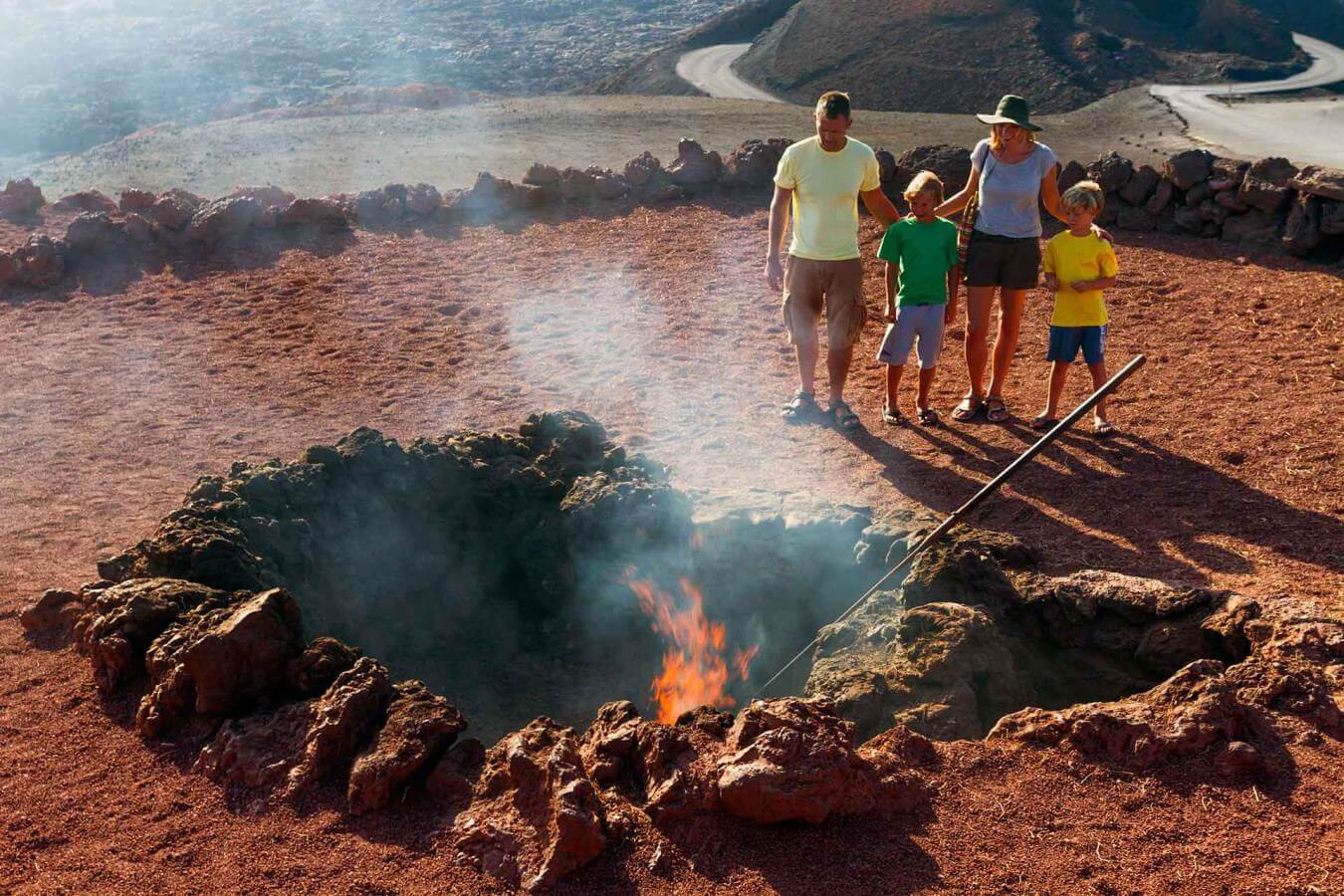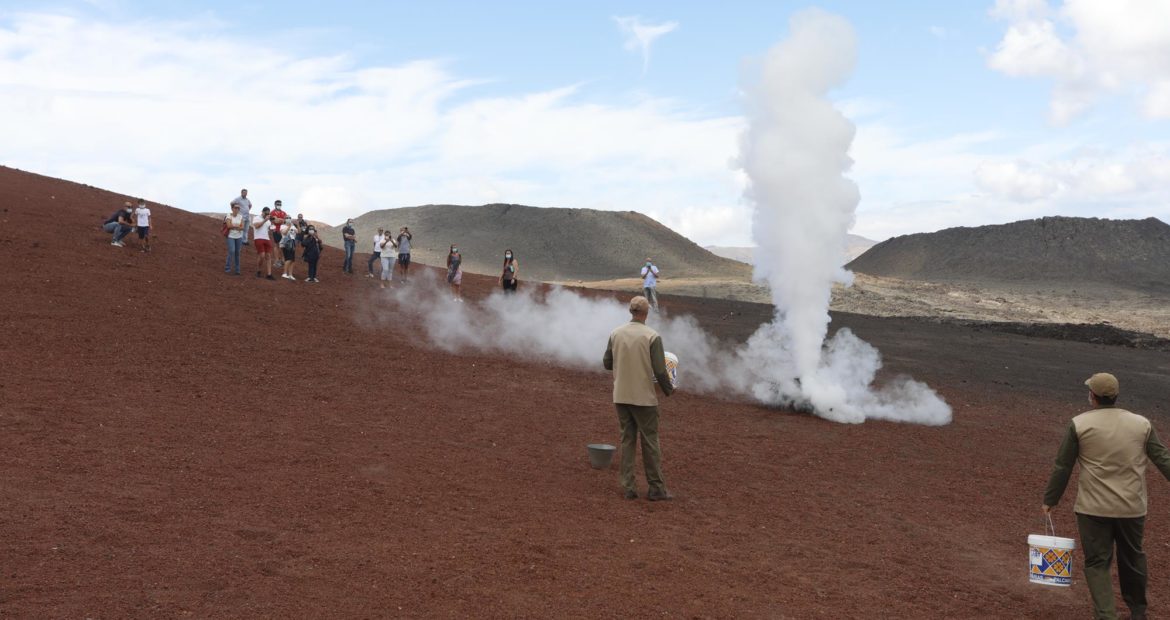
They are located in the heart of the Timanfaya National Park, one of the 12 existing in Spain. It comprises a spectacular sea of lava dotted with dozens of volcanic cones, created by volcanic eruptions that occurred from 1730 to 1736 and in 1824.
It extends across the southwestern area of Lanzarote, between the municipalities of Yaiza and Tinajo. In the place called Islote de Hilario, there are fire and water demonstrations that show the enormous heat energy contained in the subsoil.
The Island Government - Cabildo de Lanzarote - refurbished the Islote de Hilario by creating a circular restaurant and cafeteria, called El Diablo, which offers a panoramic view of the unique lava territory that surrounds it. It contains a large oven that uses natural heat energy to cook meat and fish, and which reaches temperatures of 400°C –725º F- almost at ground level.
Buses regularly leave from these facilities to take part in the Volcano Route, which consists of a collective visit to the interior of the National Park. Along the route, lasting three quarters of an hour on a 13 km journey, the characteristics of the natural phenomenon are explained and described.
The Montañas del Fuego are accessed by the road that links the towns of Yaiza and Tinajo. Visitors go to the Islote de Hilario through a colourful and unprecedented landscape, a place where heat manifestations can be observed. Plant matter burns immediately upon contact with heat, and the same occurs with water poured into pipes installed in the ground, evaporating instantly and being ejected into the atmosphere as if it were a small geyser.

The Volcano Route meanders through small cones and exclusive landscapes, offering the viewer breathtaking images, whimsical shapes and intimate sensations that put him in contact with the origin of the formation of the planet.
Although they were visited due to their interest, the Montañas del Fuego opened to the public under the management of the Island Government in 1970 while the declaration of Timanfaya as a National Park dates back to 1974. The National Park occupies an area of approximately 52 km2, being one of the most important territories in the world for those studying volcanism.
